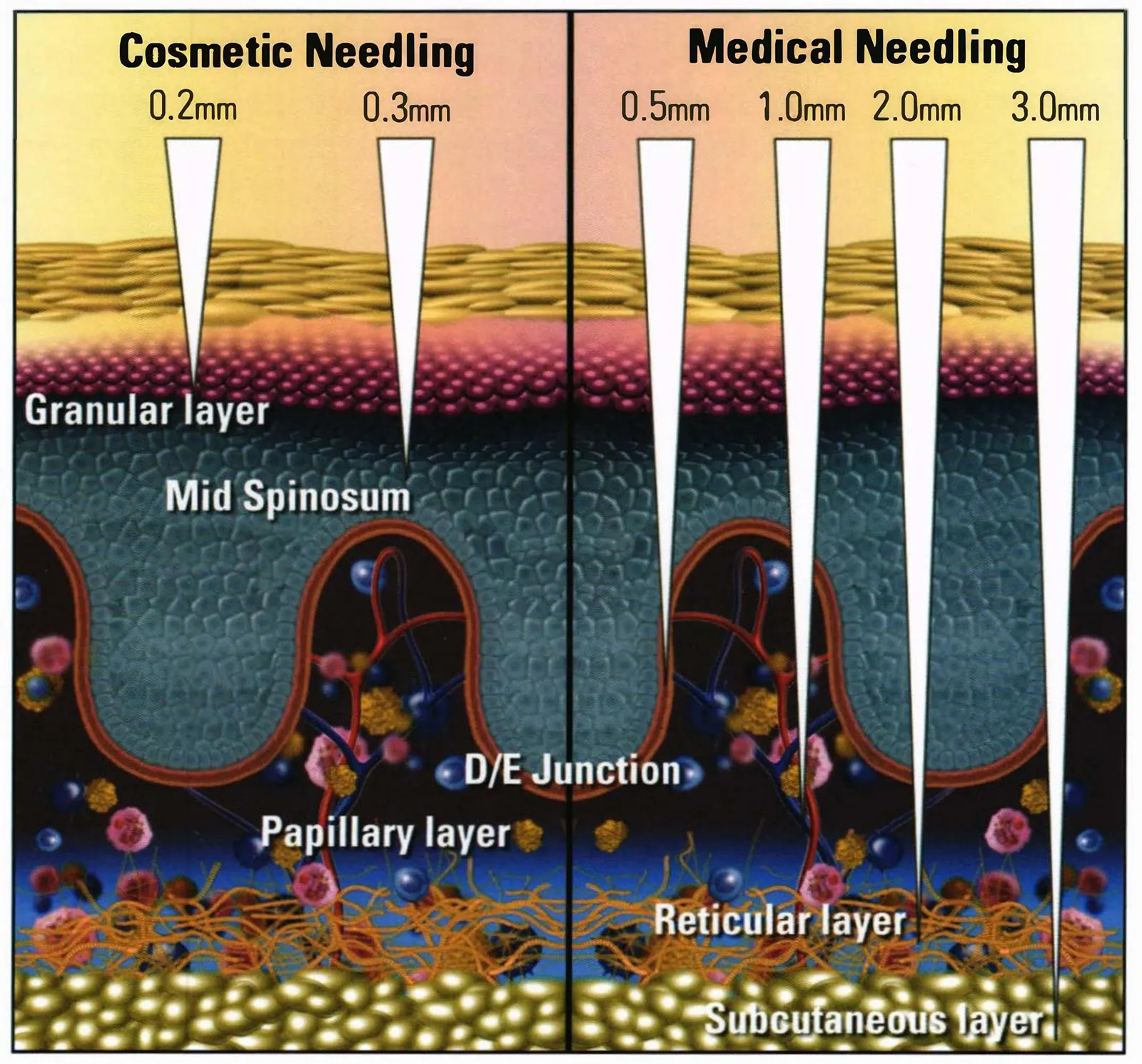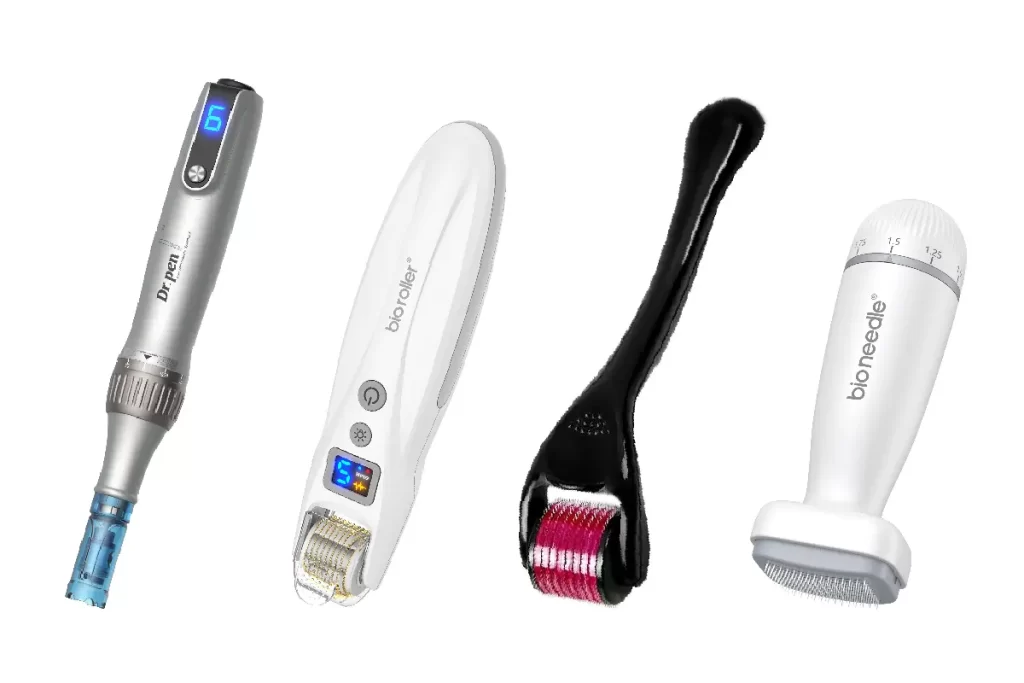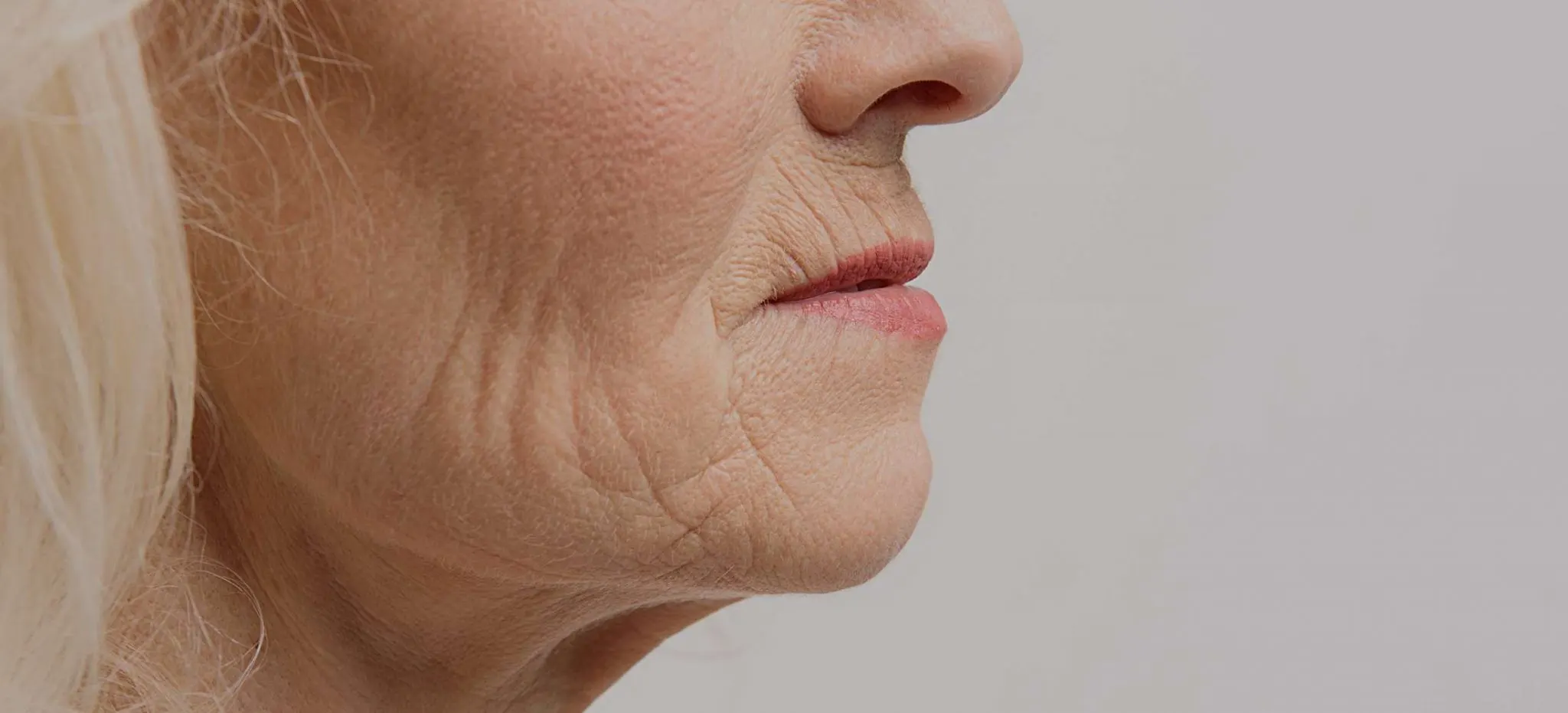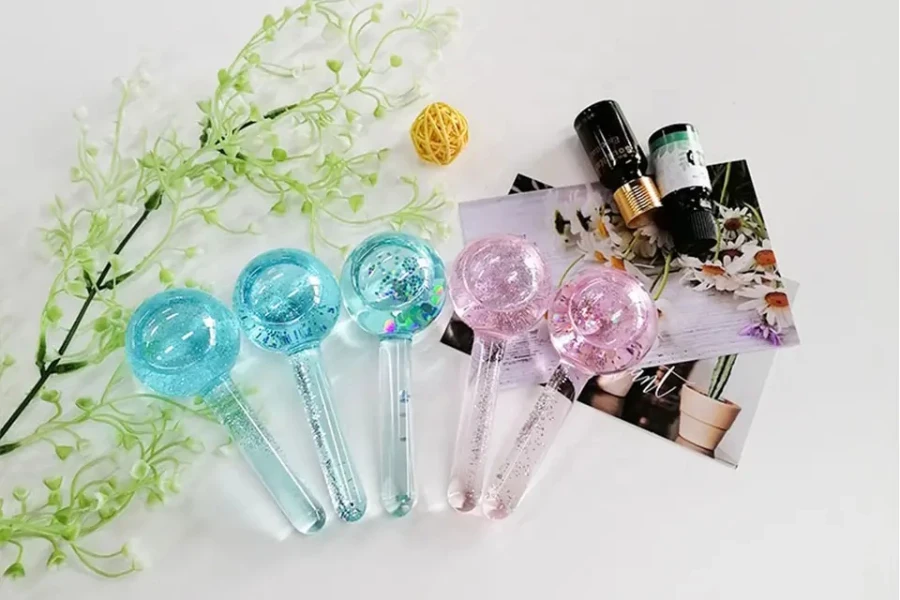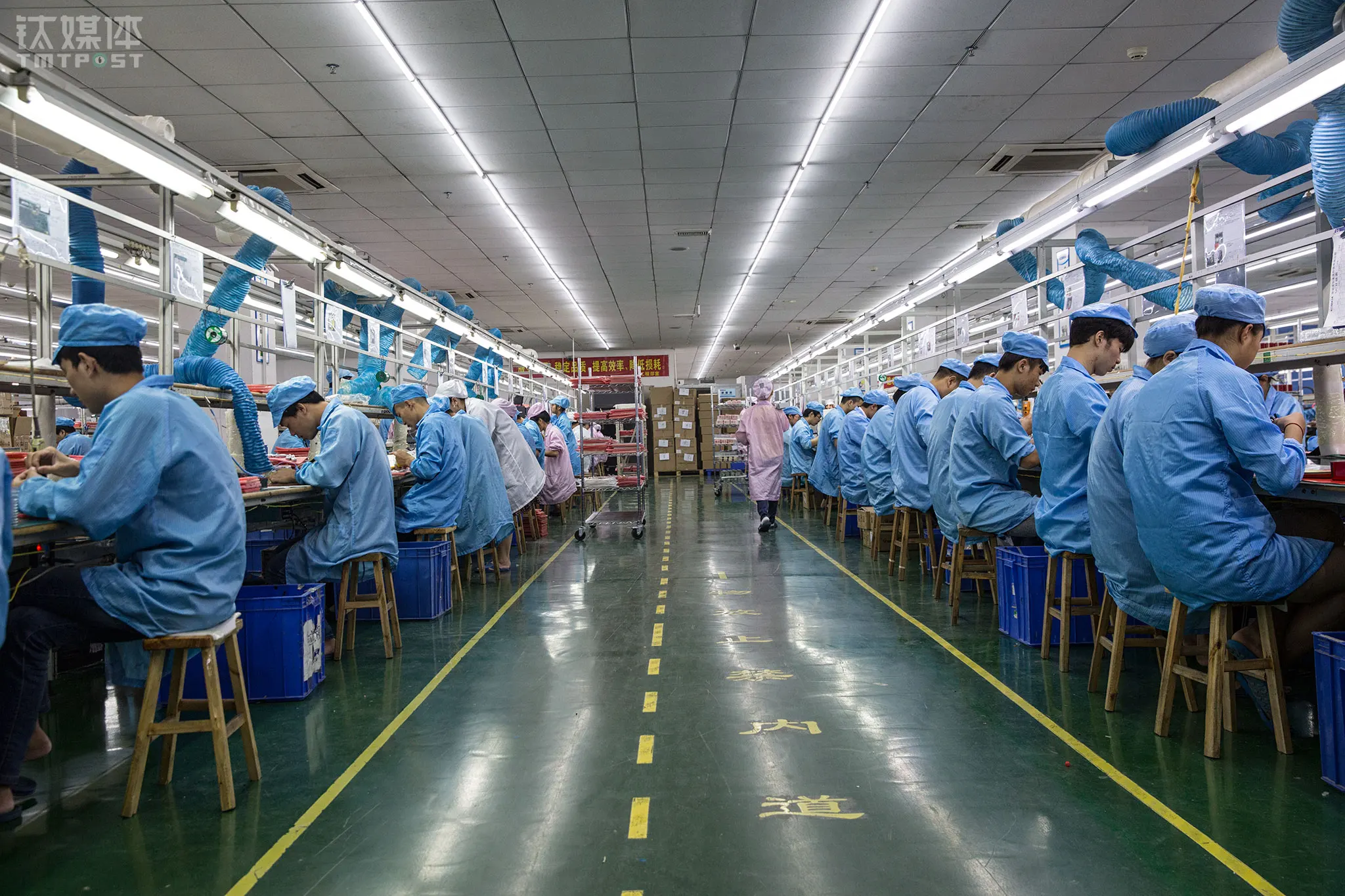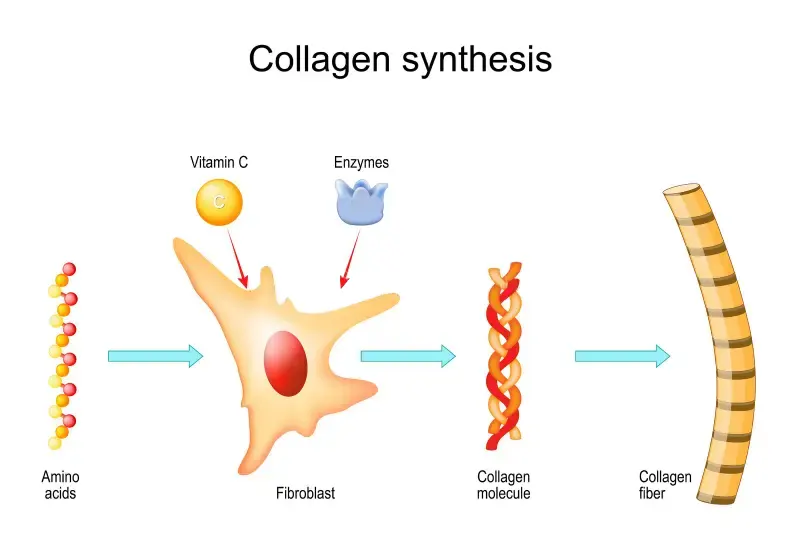Microneedle therapy has been widely used in recent years due to its remarkable effects on skin health and beauty. The key effects of microneedle therapy lie in two aspects: one is the penetration of nutrients, and the other is the stimulation of growth factors and cytokines and the induction of collagen production. The first aspect can usually be achieved by acupuncture of the epidermis, while the second aspect requires going deep into the dermis.
With the popularization of technology and the expansion of its application scope, microneedle therapy has gradually been subdivided into two types: “cosmetic microneedle” and “medical microneedle”. This classification is not only based on the technical requirements of operation depth and target effect, but also to ensure the safety and standardization of treatment.
What is cosmetic microneedling?
Cosmetic microneedling is a non-invasive treatment mainly for daily beauty. The depth of cosmetic microneedling is shallow (usually 0.2mm to 0.5mm), and it mainly acts on the epidermis of the skin. Cosmetic microneedling optimizes skin cell function and achieves cosmetic effects by increasing the number and channels through which nutrients from skin cells enter the skin. These channels allow up to 80% of nutrients to enter the skin (compared to only 7% to 10% of topical products entering the skin under normal use).
In addition, damage to keratinocytes in the epidermis of the skin promotes the production of epidermal growth factor (EGF), which repairs damaged cells at the molecular level and improves the surface condition of the skin.
At the same time, through cosmetic microneedle treatment, the cellular connection between healthy keratinocytes and melanocytes is improved, resulting in a more even distribution of melanin.
Main effects:
Improve skin tone, fine lines, enlarged pores, and enhance skin hydration and radiance.
Operator:
Both patients and professionally trained beauticians can operate safely without the need for a licensed physician.
Risks and recovery period:
Because the acupuncture depth is shallow, the risk is low, the recovery period is short, and generally no special care is required.
What is medical microneedling?
Medical microneedling refers to invasive microneedle therapy used to solve specific deep skin problems (wrinkles, scars, stretch marks, etc.). Medical microneedles have a deeper needling depth (usually 0.5mm to 2.5mm), acting on the dermis or even deeper. Medical microneedles can trigger the wound healing cascade, stimulate keratinocytes and fibroblasts, leading to upregulation of TGF-B3, epidermal cell renewal, collagen, elastin and GAG increase. The main goal is to repair skin structural problems such as scars, deep wrinkles and stretch marks. This treatment is a medical act and needs to be completed in a professional medical institution.
Main effects:
Stimulate collagen production, improve deep wrinkles, treat scars, skin sagging, etc.
Operator:
It must be operated by a professional doctor with a practicing physician qualification.
Risks and recovery period:
Due to the deep operation depth, the risk is higher, and the recovery period is usually 1 to 2 weeks..
The difference between cosmetic microneedling and medical microneedling
From the above, we know that cosmetic microneedles and medical microneedles are two forms of microneedle therapy. Although their basic principles are similar, there are significant differences in treatment depth, mechanism of action, scope of application and operation requirements.
Treatment Depth and Targets
Cosmetic microneedling has a shallow depth of needling (0.2mm to 0.5mm) and mainly acts on the epidermis, with the goal of optimizing skin cell function, improving skin tone, fine lines, enlarged pores, and enhancing hydration and radiance. In contrast, medical microneedles are deeper (0.5mm to 2.5mm) and can act on the dermis or even deeper, stimulating collagen production and skin tissue regeneration, and are used to solve deep skin problems such as wrinkles, scars and stretch marks. .
Mechanism of action
Cosmetic microneedles increase the number of channels for nutrients to enter the skin, promote cell repair and functional optimization of the epidermis, and at the same time improve the connection between keratinocytes and melanocytes, making the skin tone more even. Medical microneedles trigger the wound healing cascade, stimulate the activity of fibroblasts and keratinocytes, thereby promoting the production of collagen, elastin and glycosaminoglycans (GAGs), and reshaping the skin structure.
Operators and safety
Cosmetic microneedling can be performed by patients or trained beauticians without the need for a licensed physician, as it is shallow, highly safe and has a short recovery period. Medical microneedles are medical procedures and must be performed by practicing physicians in professional medical institutions. Because of their deepness and high risks, the recovery period is 1 to 2 weeks.
Scope of application
Cosmetic microneedles are suitable for mild skin improvements and focus on surface cosmetic effects; medical microneedles are suitable for more serious skin problems and provide deep repairs. Knowing the difference between these two types of microneedle therapy will help you choose the appropriate treatment plan based on your needs.
Comparison | Cosmetic Microneedling | Medical Microneedling |
Needling depth | 0.2mm~0.5mm | 0.5mm~2.5mm |
Operation objectives | Improvement of epidermis | Repair of dermis and deeper layers |
Operator | Beauticians, patients themselves | Dermatologists, practicing physicians |
Indications | Minor skin unevenness, fine lines, enlarged pores and other superficial problems. | Deep wrinkles, scars, stretch marks and other deep problems. |
Risks | Lower | Higher |
Recovery time | A few hours to 1 day | 1~2 weeks |
Environmental requirements | Home or beauty salon | Places that meet medical standards |
Why should we distinguish between cosmetic microneedles and medical microneedles?
In actual use, microneedle therapy faces a variety of skin conditions and needs. Different consumers or patients have different treatment goals, and they will also make a balance between their needs and the time and energy spent.
In addition, when microneedle therapy is used for deep skin treatment, body fluids often seep out of the epidermis, and the safety of the treatment process cannot be ignored.
Considering the following factors, it is necessary to distinguish between cosmetic microneedles and medical microneedles.
1. Technical requirements based on operation depth and treatment goals
Cosmetic microneedles act on the epidermis, aiming to improve skin quality and minor skin problems. Ordinary consumers can easily master the operation technology, which is suitable for daily skin care and beauty care at home without spending a lot of time and money.
Medical microneedles penetrate deep into the dermis and directly stimulate the skin’s repair mechanism, requiring higher technical level of operators, professionalism of equipment, and post-treatment care.
Differentiating microneedle therapy according to different goals and indications helps consumers choose the appropriate treatment method according to their own needs.
2. Ensure the safety of treatment
Cosmetic microneedles: The needle puncture depth is shallow, and the risk of infection and complications is low, which is suitable for non-medical environments, such as daily home environments.
Medical microneedles: The needle puncture depth is deep, involving blood, nerves and other deep skin tissues, which is more risky and requires a medical environment and professional technical support. Some consumers may choose to perform some medical microneedle treatments that penetrate deep into the dermis at home in order to save money and time. This is unsafe and has a high risk of infection, but most consumers are not aware of this.
Distinguishing between “cosmetic microneedles” and “medical microneedles” can ensure that consumers receive professional operation when receiving medical microneedles, thereby reducing risks.
3. Industry norms and legal requirements
In many countries and regions, medical microneedles are classified as medical behaviors and must be performed by practicing doctors in places that meet medical standards. Unqualified personnel are not allowed to engage in medical microneedles.
Cosmetic microneedles fall into the category of beauty care and are provided by non-medical institutions such as beauty salons.
This legal distinction protects consumer rights and avoids the serious consequences that may result from non-professionals operating medical microneedles.
The significance and value of distinguishing between cosmetic microneedles and medical microneedles
1. Standardized management of the industry
Avoid beauty institutions from conducting medical activities beyond their boundaries and improve industry transparency.
Ensure high-standard operation of medical activities and enhance consumers’ trust.
2. Ensure the safety of treatment
Let consumers understand the effects and risks of different microneedle therapies more clearly, so that they can choose treatments that suit their needs.
Avoid unnecessary damage or poor results caused by misoperation or wrong choices.
3. Industry norms and legal requirements
The distinction between cosmetic microneedles and medical microneedles has promoted the development of technology, allowing different microneedle therapies to more accurately meet the needs of different consumers.
This segmentation has also promoted the professional development of practitioners, such as more targeted training directions for beauticians and dermatologists.
The distinction between cosmetic microneedles and medical microneedles not only helps to standardize industry development and protect consumer safety, but also promotes technological progress and professional division of labor. However, in order to make this distinction play a greater role, it is still necessary to strengthen consumer education and industry supervision, while paying attention to the balance between technological innovation and market demand. In the future, with the further improvement of technology and laws, this segment will bring more possibilities and higher safety to skin treatment and beauty care.
Ending
In general, cosmetic microneedles and medical microneedles are two concepts that cannot be ignored in microneedle therapy. They differ significantly in treatment depth, treatment goals, operating techniques, and indications. The distinction between the two within the industry will help regulate the development of the medical and beauty industries, ensure consumer safety, and promote continuous innovation and advancement of technology. When choosing a treatment, consumers should select the appropriate microneedling method based on their needs, skin concerns, and treatment goals. At the same time, the industry should strengthen professional training and supervision of different types of treatment to promote safer and more effective treatment standards.

